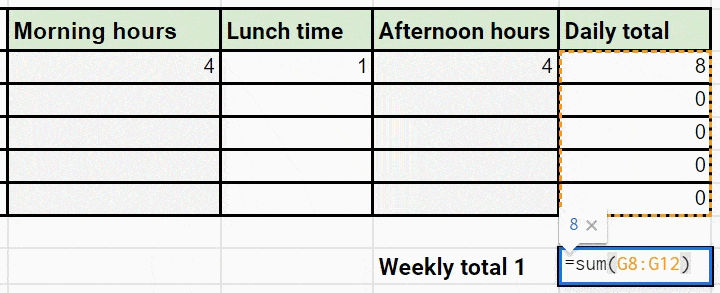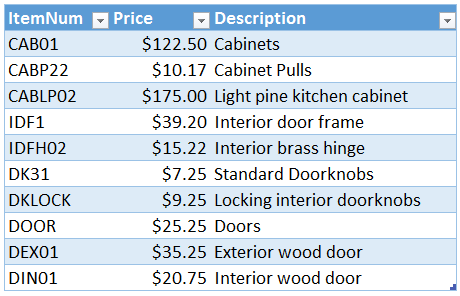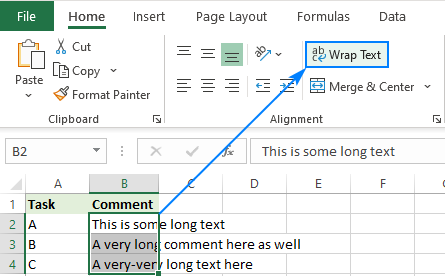
Returns summation value from the mentioned range of cells.

Returns summation value from the mentioned cells or range of cells. Combines multiple cells or range references into one reference Table: Excel's Mathematical Operation based on Excel Operators

Text operator uses the ampersand (&) symbol to work with text cells, text strings enclosed in quotation marks, and text function results. ➢ Single Text Operator: A text operator in a formula that returns text. This type of operator mostly used in Excel's logical functions. If the statement is false, the formula returns the logical value FALSE, which is equivalent to zero. If the statement is true, the result of the formula is given the logical value TRUE, which is equivalent to any nonzero value. ➢ Comparison Operator: A comparison operator compares two or more numbers, text strings, cell contents, or function results. ➢ Reference Operator: The reference operators combine two cell references or ranges to create a single joint reference. The formula =a^b means that the value a is raised to the power b. Most of these operators are straightforward, but the exponentiation operator might require further explanation. ➢ Arithmetic Operator: They are by far the most common type of operator and they combine numbers, cell addresses, and functions to perform calculations. Excel recognizes four types of operators: such as Arithmetic, Reference, Comparison, and Single text. Most of the basic Excel formulas require nothing but the sole use of operators.

In other words, Excel operators signify the type of computation that takes place between the cells and the linked values. EXCEL SYMBOL FOR MATHEMATICAL OPERATIONSĪn operator is a symbol that determines the type of operation we want the formula to perform. EXACT COPY THE FORMULA WITH ‘FIND AND REPLACE' (APPLICABLE FOR ENTIRE RANGES)Ġ1. EXACT COPY THE FORMULA WITH ‘PASTE SPECIAL‘ (APPLICABLE FOR ENTIRE RANGES) EXACT COPY THE FORMULA WITH TEXT TO COLUMNS (APPLICABLE ONLY FOR SINGLE COLUMN) EXACT COPY THE FORMULA FROM THE FORMULA BAR (APPLICABLE ONLY FOR SINGLE CELL) COPY FORMULAS WITH THE ‘PASTE SPECIAL' DIALOG BOX COPY FORMULAS HORIZONTALLY WITH THE EXCEL SHORTCUT (CTRL+R) COPY FORMULAS VERTICALLY WITH THE EXCEL SHORTCUT (CTRL+D) COPY FORMULAS WITH EXCEL SHORTCUT (CTRL+C) MATHEMATICAL ORDER OF OPERATIONS IN EXCEL

STOP EXCEL AUTOMATICALLY SELECTING MULTIPLE CELLS HOW TO
In this tutorial, we will learn how to use mathematical operations (operators) in Excel formulas, the mathematical order of operations, and learn how to construct formulas using cell addresses so that when the value of an input cell changes, the result of the formula dynamically changes without modification in the formula. ➢ A resulting value is displayed in the cell. ➢ An underlying formula that is entered into the cell The result of the expression is placed in the cell that contains the formula, but the formula is displayed in the formula bar. When a cell reference (or cell address) is included in a formula, it is not the address that is used in the formula but, rather, the value that is in that cell. A function is a predefined formula in Excel that is made available for us to use in Excel, such as SUM, VLOOKUP, SUMIFS, etc.Ī formula combines specific values, cell references (or cell addresses), mathematical operations, and/or functions used in a calculation. In addition to allowing us to create our own formulas, Excel comes with hundreds of built-in-formulas called functions, which are used to perform frequent calculations, such as SUM, AVERAGE, COUNT, COUNTA, or more complex calculations, such as Double VLOOKUP, Nested VLOOKUP or NPV (net present value).Ī formula is an expression that calculates numbers or evaluates the contents of one or more cells. Formulas can be used to perform basic arithmetic, carry out more complex if-then-else analysis, or search through lists of data to look up and match specific criteria. They link together and manipulate the data in the worksheet. The Formulas are the basic component of Excel. How To Create Formula in Excel? But before we go into details we must have knowledge of the formula, functions, mathematical operations, order of precedence or mathematical order of operations, cell reference and use of the dollar sign in excel, etc.


 0 kommentar(er)
0 kommentar(er)
